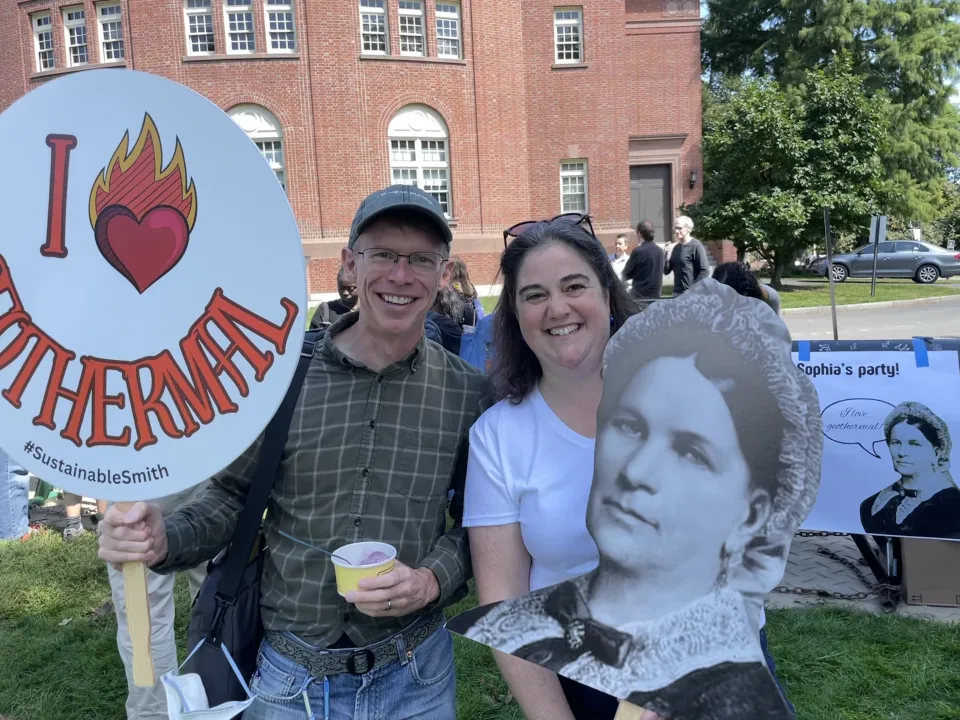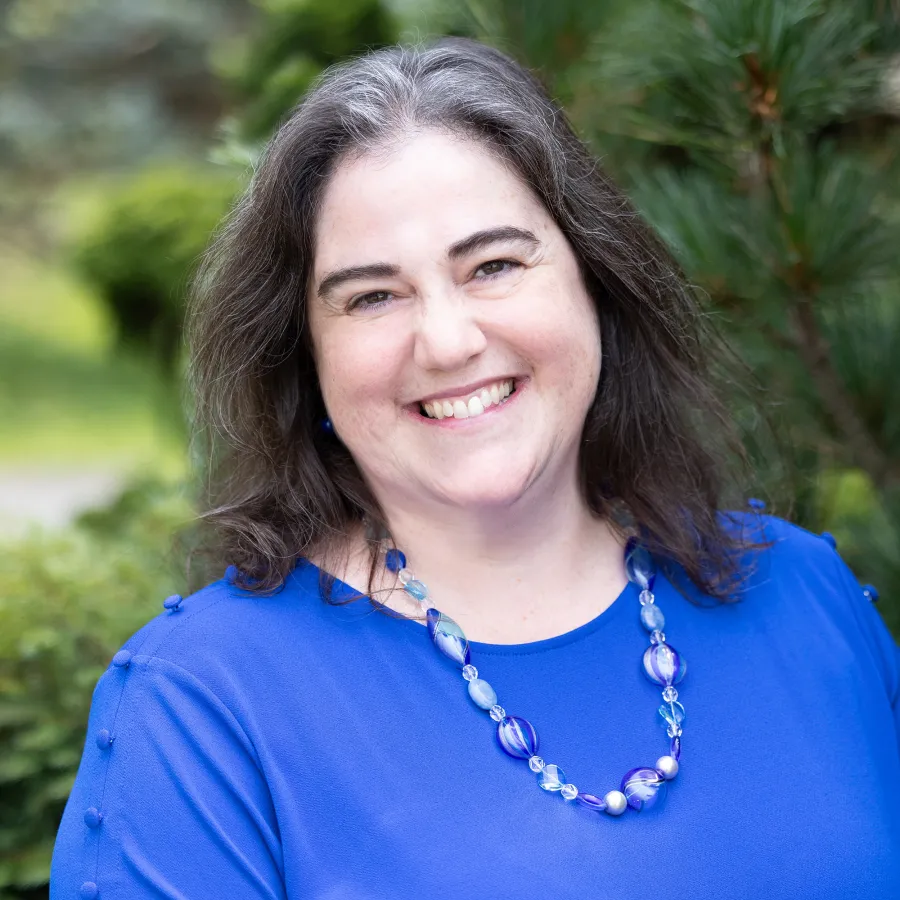Meet New CEEDS Faculty Director Susan Sayre
Published October 14, 2025
In her first years as a student at Swarthmore, Susan Sayre had no interest in economics, which she thought was “all about the stock market.” She was interested in environmental issues, though, and in order to minor in public policy, she needed to take a “hardcore” microeconomic theory course. To her surprise, she found “that economics is actually a really powerful language for thinking in a concrete and logical way about the causes of different issues . . . For me, it’s this really interesting lens for talking about the problems that I find interesting.” Sayre’s path towards economics was also helped by a professor who reached out when he found out she wasn’t already an economics major and said, “We need to talk.” Sayre listened and ended up graduating from Swarthmore with a double major in religion and economics. She came to Smith in 2009 after graduate school and a post-doc, glad to find herself at another small liberal arts college. Sayre now says, “I went to a liberal arts college, I had a professor go way out of their way to say, ‘you should think about doing this,’ and I got a Ph.D. in economics because of that. And now I’m here at Smith and I teach that same class that turned me into an econ major. It’s my favorite class to teach.”
An associate professor of economics at Smith, Sayre is currently serving as the new faculty director of the Center for the Environment, Ecological Design and Sustainability (CEEDS) and the co-director of the Environmental Concentration. Sayre has been involved with environmental issues throughout her time at Smith, through both her teaching and her participation in the discussions around Smith’s path to decarbonization. In 2021–22, she was a member of the District Energy Working Group, in which faculty, students, operations staff and trustees gathered to discuss Smith’s options to get to carbon neutrality and which eventually led to the geothermal project. She has also helped people at other institutions make more considered decisions about their own decarbonization plans. Sayre co-advised Breana Parker ’18, whose thesis on Smith’s carbon price included development of an Excel calculator that allows users to incorporate the cost of carbon emissions into a comparison of the lifetime cost of two different options. These options don’t necessarily need to be as large scale as investing in a geothermal system; institutions or individuals could consider the cost and climate benefits of replacing gas vehicles—or gas dryers—with electric ones. As a CEEDS faculty fellow in 2020-21, Sayre and her students updated the calculator, figuring out the calculator’s primary users and what information would be most helpful to them and testing and retesting to make sure “the financial analysis makes sense at the end of the day.” The calculator, now called the Proxy Carbon Life Cycle Cost Calculator, is available on the website of Second Nature, an organization which aims to accelerate climate action in higher education.
Sayre’s own recent research has focused on carbon pricing in the context of both higher education and state-level carbon tax policies. In recent years, she’s worked particularly on several voter-funded initiatives in the state of Washington that would have “assessed a carbon tax on the sale of any carbon-containing fuel” and used the revenues to cut the sales tax and/or to invest in infrastructure. Sayre and her co-author worked to “develop a methodology for estimating how that policy would have affected households in Washington,” paying careful attention “to the wide variety of ways that it would affect households.” Sayre’s task was to figure out “a way to come up with a reasonably plausible estimate of the range of impacts that people were going to experience.” Sayre has been doing similar work on potential carbon tax and rebate systems in Massachusetts, “mapping out how they might affect different households and . . . what the distribution of impacts would look like across the state.” Any potential tax on carbon-containing fuel will inevitably negatively impact some people, given the wide variety of energy use across the state. But the work that Sayre does in providing “better information” helps policy makers identify the actual tradeoffs in front of them instead of relying on potentially politically motivated assumptions about impacts.

Early in her tenure at Smith, Sayre was involved in a CEEDS-sponsored faculty learning circle, where faculty gathered to talk about the BP Deepwater Horizon disaster. She describes it as “a great opportunity to bring faculty from all across campus together who shared some common interests, but brought different perspectives.” There was no expectation of a concrete outcome; the point was to gather in community and share expertise. One of her goals as the new faculty director of CEEDS is to explore ways to connect the ever-larger group of faculty members whose work involves environmental issues. “We’re doing amazing work related to environmental issues across campus,” she says. “And I think CEEDS has been doing a really good job of supporting [people] individually. But . . . I’m hoping we can figure out ways to help build more community among that group.”
She’s also excited to be in on the conversation about where Smith might go next in terms of sustainability. “I don’t think we know yet,” she says. “But how do we facilitate those conversations that bring all these people together to say what is it that Smith should be doing next? We’ve made this big commitment [with geothermal]. It’s not going to eliminate all of our carbon emissions. And even if we could get Smith to no carbon emissions, that's not the end of the story when we think about climate change and sustainability. The institution has, I think, a pretty strong commitment toward being a leader in this space. And I’m excited to be helping the College think about where might we go next . . .It’s not just sustainability at Smith, but it’s also how Smith helps . . . drive action in other spaces.”
